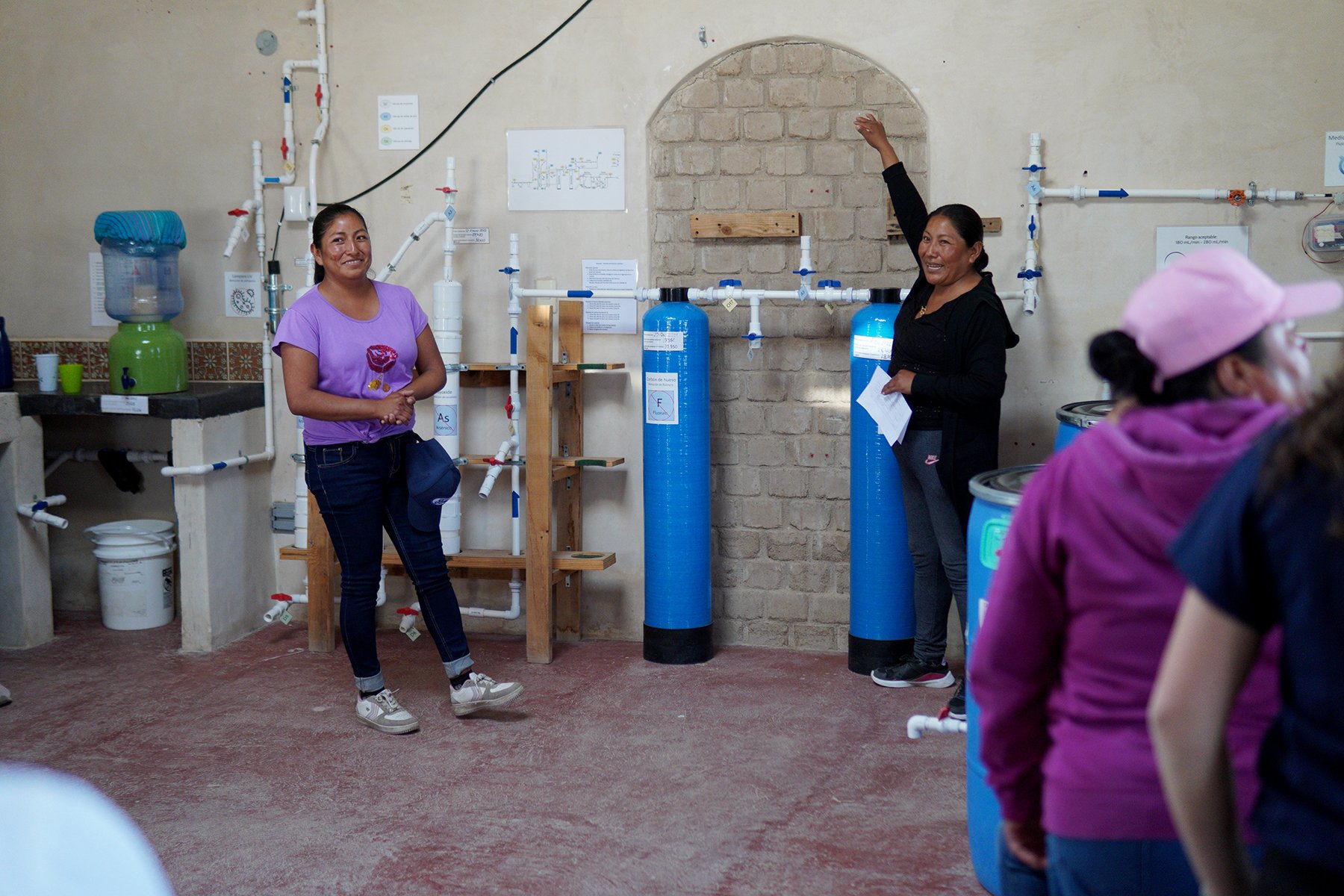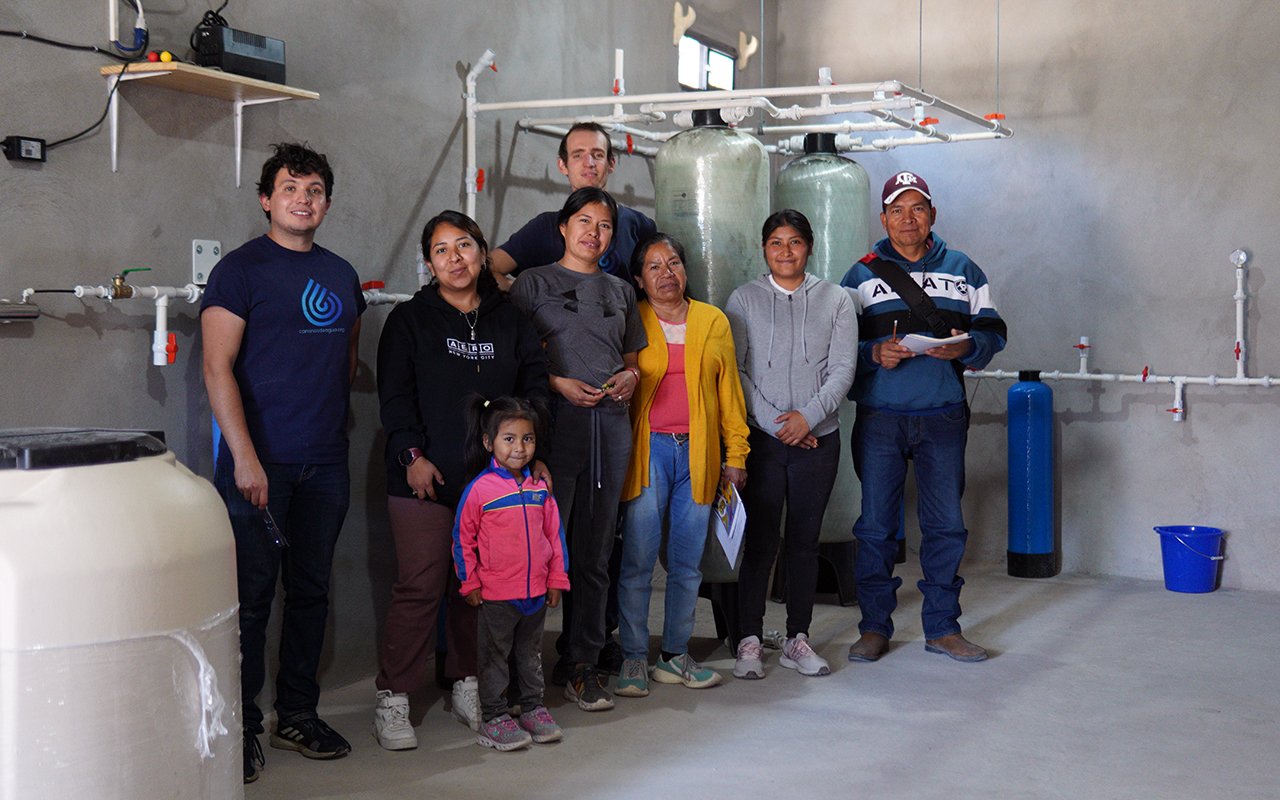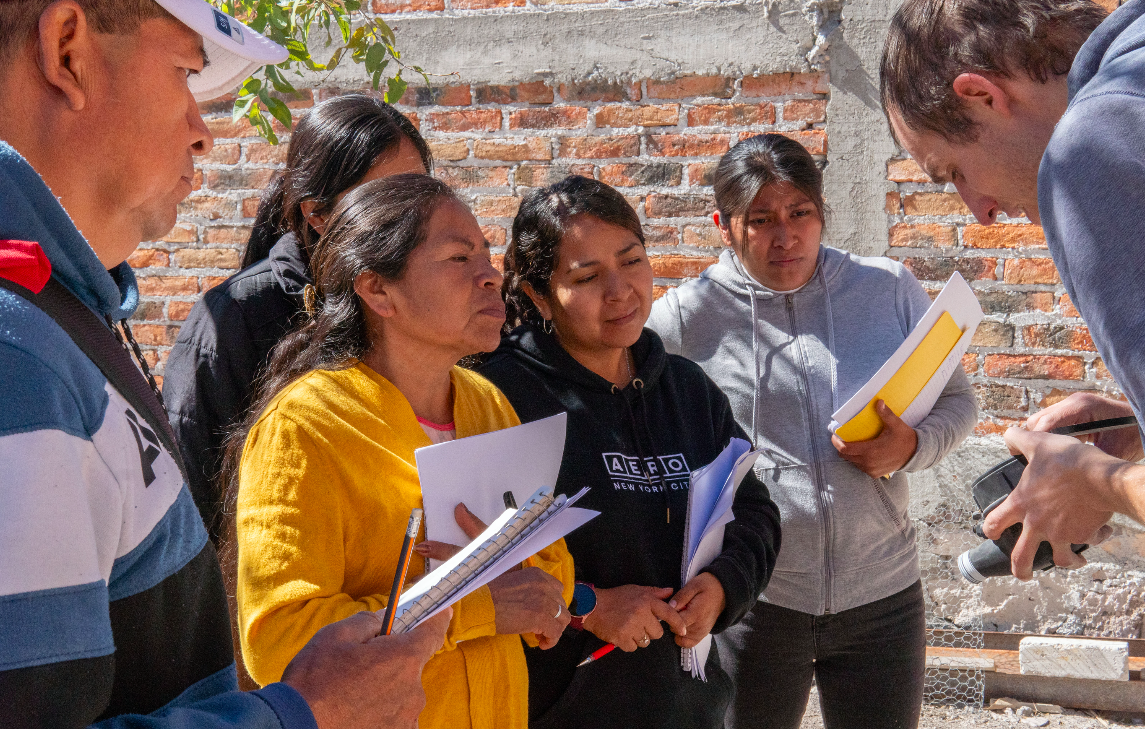
Groundwater Treatment System
The Community- Owned Groundwater Treatment System
(GTS)
Arsenic and fluoride are regionally-specific, but globally distributed, water contaminants affecting at least 300 million people worldwide, with an estimated 21 million people in Mexico alone, disproportionately impacting low-income communities. These contaminants are completely dissolved in the water, extremely difficult to remove, and are linked to a host of chronic health conditions, including dental and crippling skeletal fluorosis, skin disease, cognitive development and learning disabilities in children, and even several types of cancer. Until now, there has been no available technology which is practical and effective for rural application. Commercial treatment systems, such as reverse osmosis, are too expensive, require continuous electricity, and can waste the already scarce water that is available.
The GTS is low-cost, easy to build, operate, and maintain, and features a scalable capacity so that each system can provide entire communities with year-round clean, safe drinking water. The system uses universally-available PVC materials for its construction and leverages filtration media including iron oxide for arsenic removal and locally produced bonechar to adsorb fluoride. The system also includes biological removal and deactivation, sediment filtration, and correction for taste and odor, as well as removal of organic chemical contaminants with a wood biochar. It is operated by gravity and uses limited electrical inputs, which do not require constant connection.
-
The technology has been proven in the lab, but also at a full-scale with a pilot system in the community of Los Ricos in the municipality of San Miguel de Allende. This system was installed in 2020 and has been continuously operating since then. The system currently provides safe drinking water for around 30 families and is operated by community members. This system cost around the same price in materials as the materials for one rainwater harvesting system for one family.
The water for the system comes from the local deep tube well. The treatment starts with the sediment filters, then progresses to ultraviolet disinfection, arsenic removal with Bayoxide iron oxide, fluoride removal with bonechar, an arduino for flow measurement, biochar for improved taste, and finally the storage of the clean water. After the centralized system treatment, the water is filtered at the point-of-use (user’s houses) by Caminos ceramic filters for final disinfection prior to use. See the system diagram below.
Community members provide volunteer labor and make all decisions regarding project location, organization, and beneficiaries – based on need and participation. A community-appointed committee runs the pilot system in the community of Los Ricos and has been involved in every aspect of the project, including planning, organizing, being trained on how the technology works, and learning to do everything from basic to complex operations (sampling, testing for arsenic, fixing leaks and other troubleshooting, monitoring the flow and determining when the filters need changed out, disinfecting the entire system, etc). They have also been involved in the conversations about the best way to operate the system - reflecting on how the project is going, what should be changed, and how to get more people involved. We have been gratified to see that in this process, in addition to creating more sustainable impacts, our projects also strengthen existing community processes – contributing to stronger, better-organized, and more resilient rural communities.
GTS: Empowering Communities, Transforming Water
GTS is the result of years of research, development, and testing by Caminos and its academic partners. This award-winning technology has proven to be highly effective and sustainable, uniquely putting the power of water treatment into the hands of those most adversely affected. By leveraging existing treatment technology, as well as innovative new technology, GTS is able to remove dangerous contaminants, specifically arsenic and fluoride, from groundwater, while being directly operated, monitored, and maintained by the community itself.

Community-Driven & Community-Owned
GTS is the result of years of intensive research, development, and field testing by Caminos de Agua (Caminos) in Central Mexico. This technology has proven to be highly effective and sustainable in the unique way that it puts the power of water treatment into the hands of those most adversely affected. By leveraging proven treatment technology, GTS is able to remove dangerous emerging contaminants, including arsenic and fluoride (which are largely overlooked by many water development projects), while being directly operated, monitored, and maintained by the rural community itself.
Community members provide volunteer labor and make all decisions regarding project location, organization, and beneficiaries – based on need and participation. A community-appointed committee runs the pilot system in the community of Los Ricos and has been involved in every aspect of the project, including planning, organizing, being trained on how the technology works, and learning to do everything from basic to complex operations (sampling, testing for arsenic, fixing leaks and other troubleshooting, monitoring the flow and determining when the filters need changed out, disinfecting the entire system, etc). They have also been involved in the conversations about the best way to operate the system - reflecting on how the project is going, what should be changed, and how to get more people involved. We have been gratified to see that in this process, in addition to creating more sustainable impacts, our projects also strengthen existing community processes – contributing to stronger, better-organized, and more resilient rural communities.

Next Steps
The next phase involves scaling and replicating the technology, as an inspirational model is created, to be shared with collaborators in other regions of Mexico and beyond. Our vision is to replicate these systems, creating local access to safe drinking water that is able to be completely community-operated and maintained. In the process of doing so, a comprehensive regional model, including both the technical and social components, will be refined. The model can then be replicated by other actors, in other areas with similar water challenges.
The goal of our project is to create sustainable systems that are community-led and require limited Caminos involvement, thus creating a more scalable, systemic solution to these new global water quality challenges. The outcomes of the next GTS installations will have profound and wide-reaching implications for the improvement of health and well-being of similar communities throughout our region – and around the world.
Get in touch.
Interested in learning more about our work or collaborating with us? Whether you have questions, ideas, or simply want to chat, we’d love to hear from you! Reach out and join us in creating sustainable water solutions for our communities.


